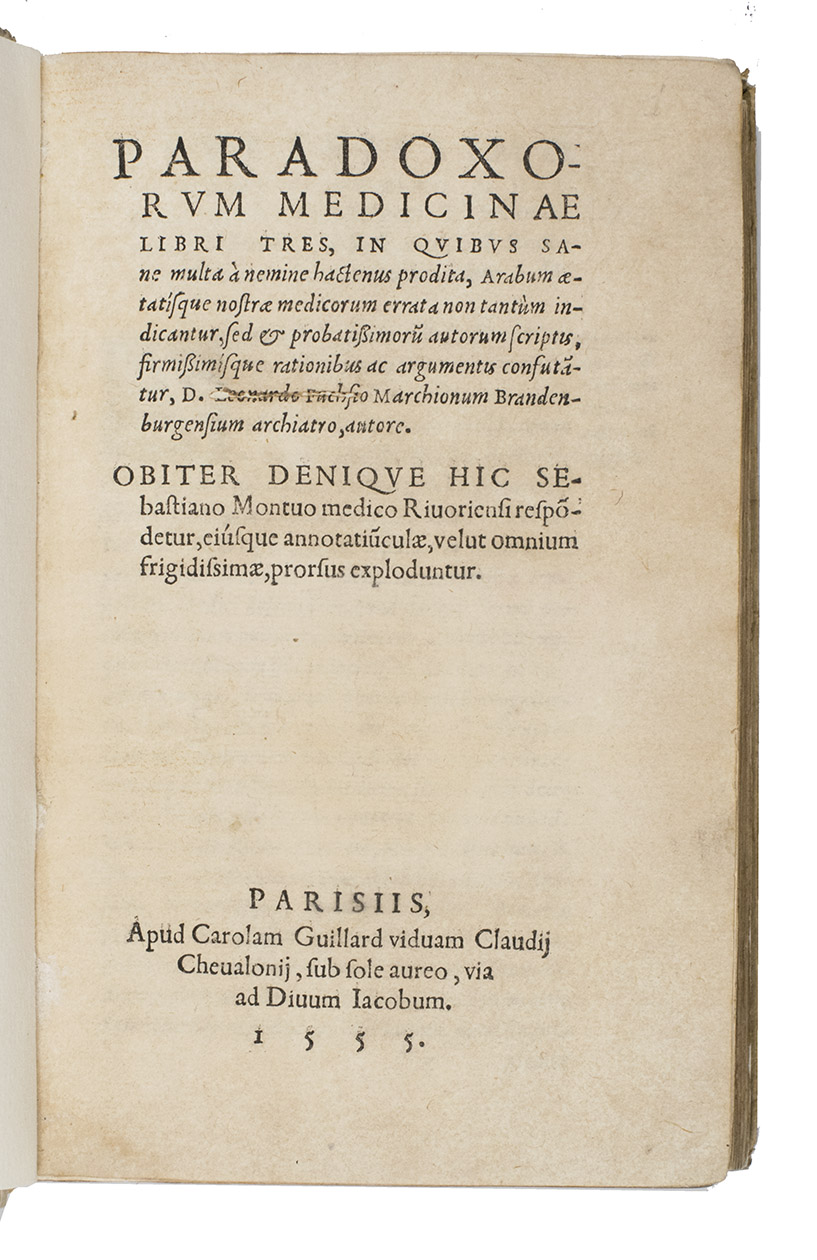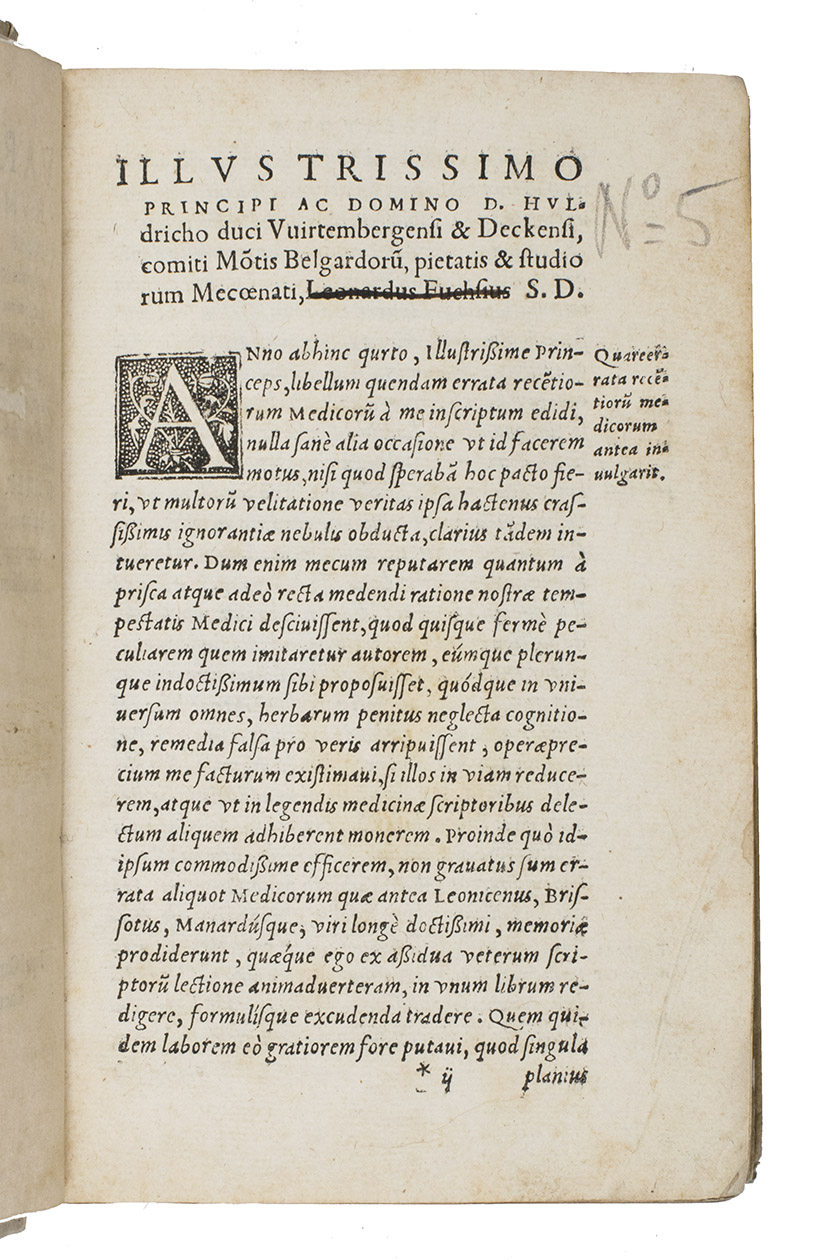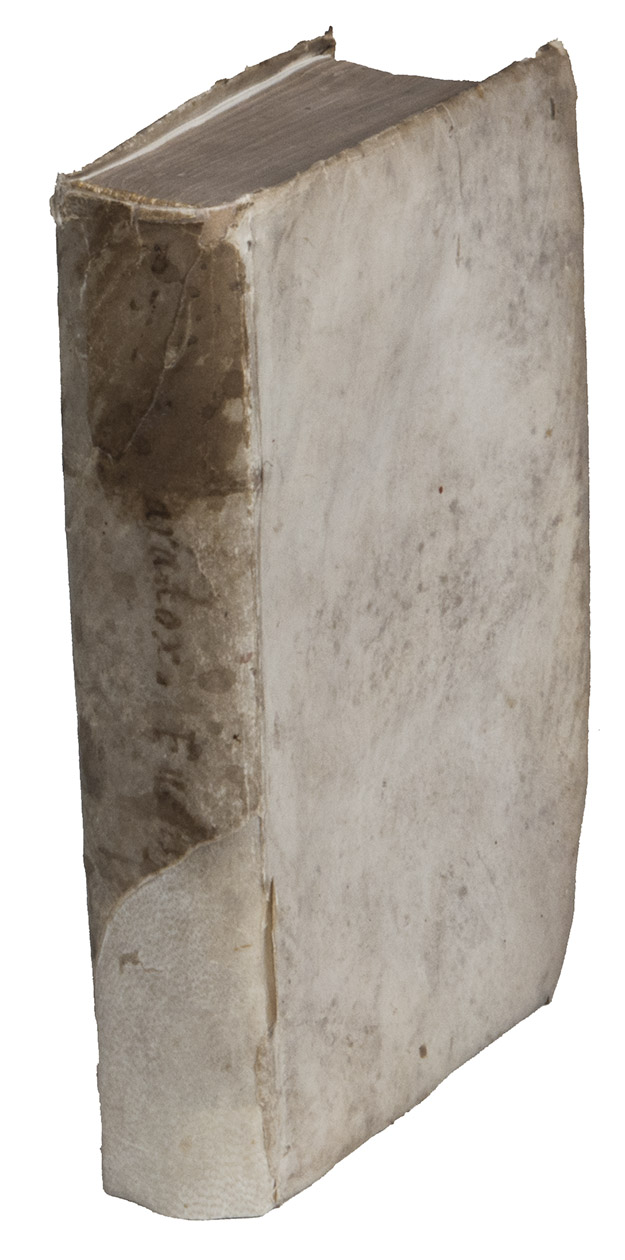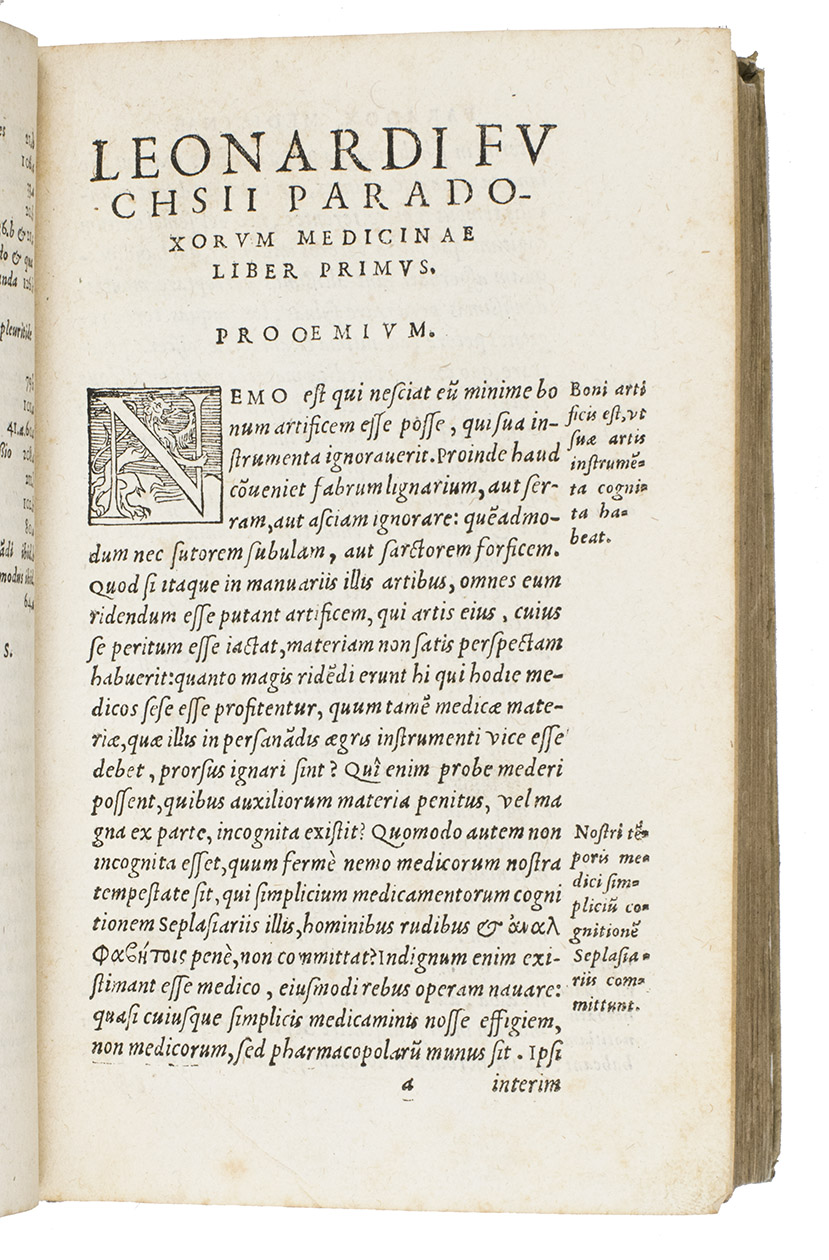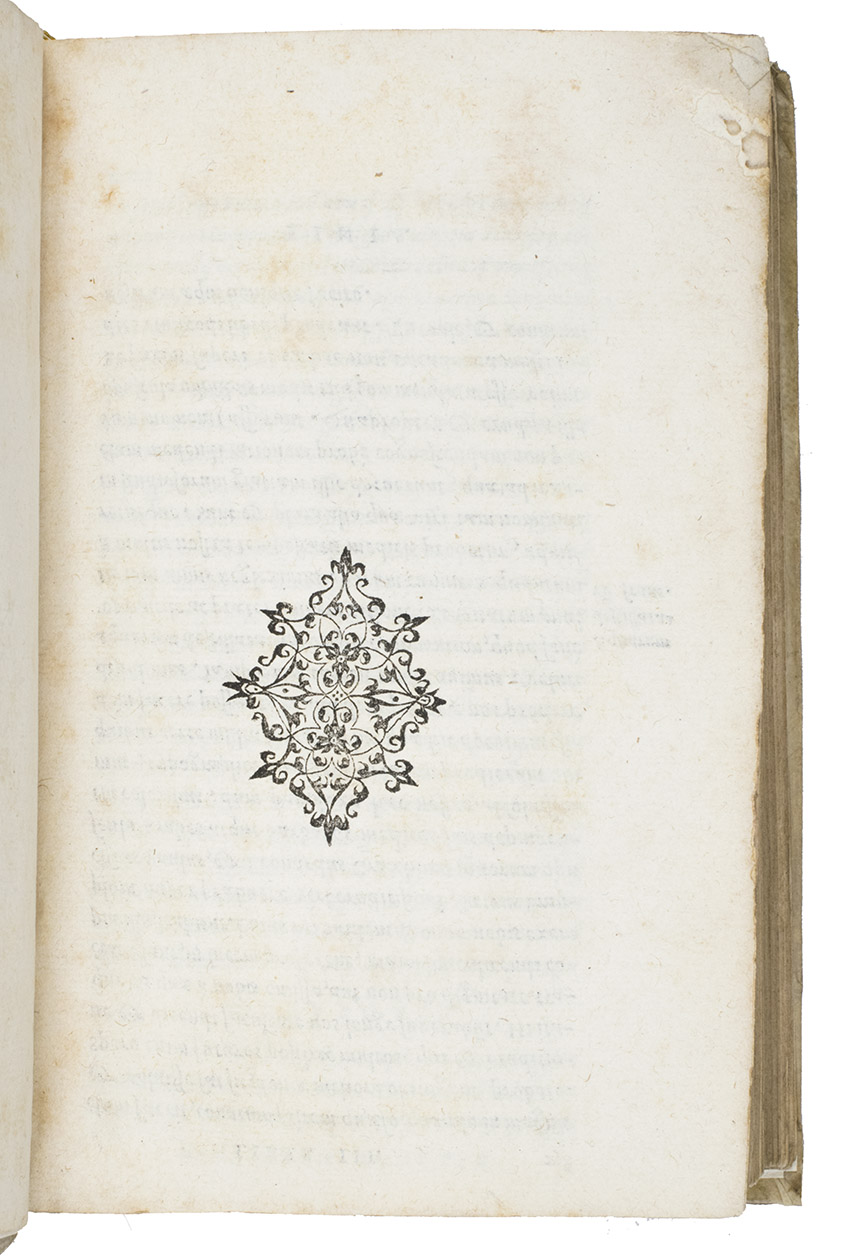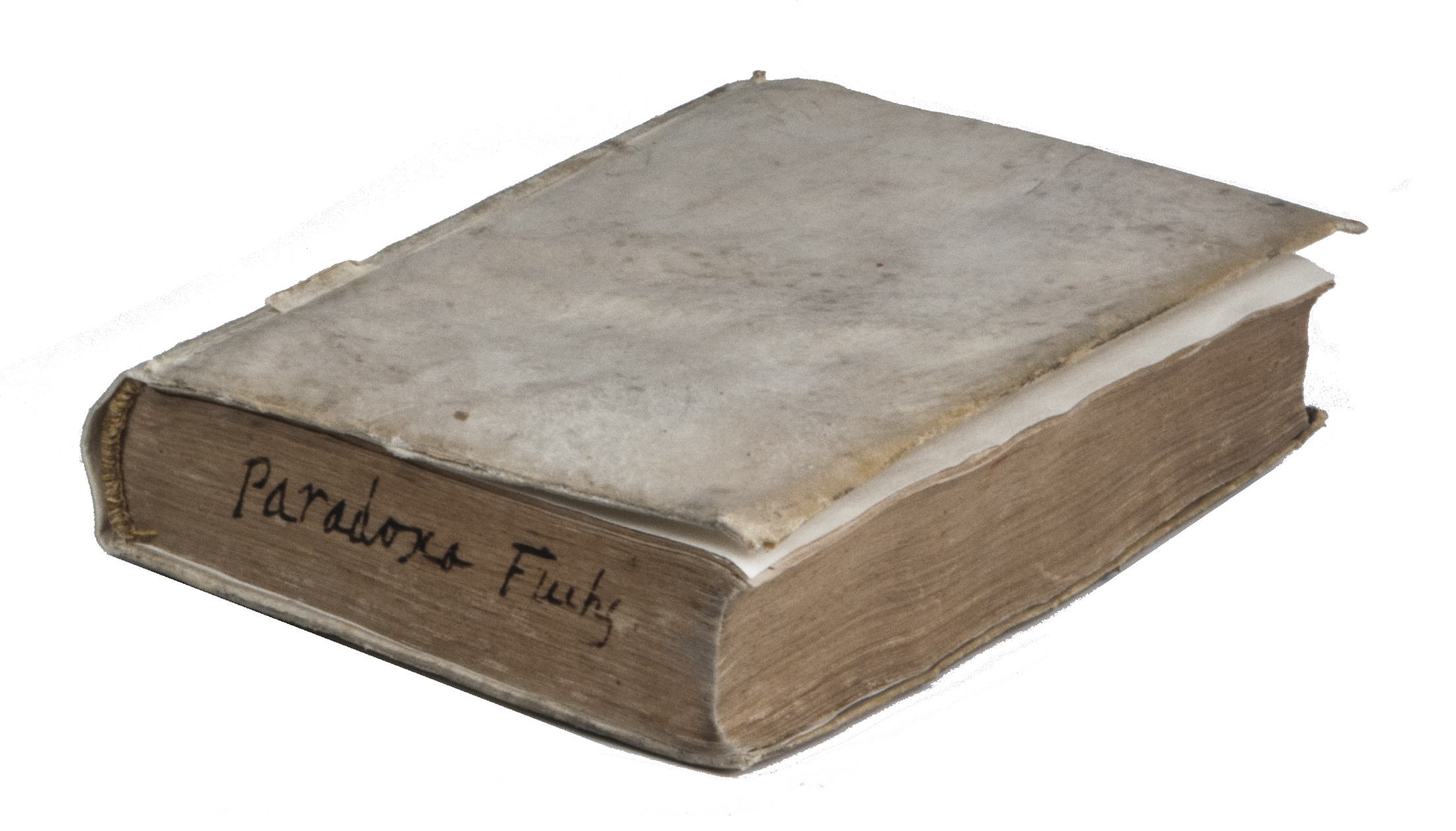FUCHS, Leonart.
Paradoxorum medicinae libri tres...
Paris, Charlotta Guillard, widow of Claude Chevallon, 1555. 8vo. With some woodcut initials. The main text (and shoulder notes) set in italic type, the preface and long chapter headings in roman and long passages in Greek. Contemporary vellum over thin boards with title in ink on spine and on lower edge, modern endpapers. [20], 239 ll.
€ 1,000
Fourth (second Paris) edition of Fuchss Latin Paradoxorum medicinae (first published at Basel, Johann Bebel, 1535), which in turn was an emended and greatly expanded version of his Errata recentiorum medicorum (Hagenau, Johann Setzer, 1530). Like all the best Renaissance medical authorities, Fuchs mixed influences from Islamic and classical sources, but here in his first publication he argues against Islamic medicine and favours a return to greater emphasis on the classics. He argued for the use of herbes medicinales (simples) rather than the noxious compounds of arcane ingredients concocted in medieval medicine. As Fuchss preface makes plain, he was primarily concerned with the medicinal uses of plants and urged physicians to extend their knowledge of simples, arguing that they could not hope to treat diseases until they fully understood the role of simples in medication. Although he fought against the Islamic/Arabic hegemony in medicine and to return to the Greek authors, he nevertheless recognised the importance of practical experience as well and offered botanical field days for the students, where he demonstrated the use medicinal plants in situ.
The text is divided into three parts concerning questions of medical botany, pharmacology, therapeutics and anatomy. Beginning with the 1535 edition, Fuchs not only greatly expanded the book but also included his reaction to the critique published by Sébastien Monteux in 1533: Annotatiunculae in errata recentiorum medicorum. The present edition appeared in two simultaneous issues, the other published by Martin Le Jeune: they are probably identical except that the name and address was changed during the press run and Le Jeunes issue has his woodcut device on the title-page.
Leonard Fuchs (1501-1566), professor of Medicine at Tübingen in Württemberg, was one of the most important pioneers in the transformation of botany during the Renaissance. He was especially interested in the medicinal properties of plants and is most famous for his ground-breaking De historia stirpium, one of the most important early herbals.
Re-backed with the original vellum over a new binding. Binding a little stained, otherwise in good condition. Adams, F1124; Durling 1716; Hirsch/H., II, 557; Bayle, I, 199; USTC 151882; cf. Bird 956; Haeser, II, 17; Osler, 2689; Waller 3298, Wellcome, I, 2433.
Related Subjects:
